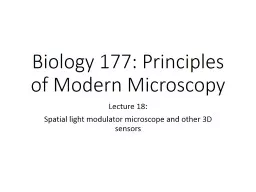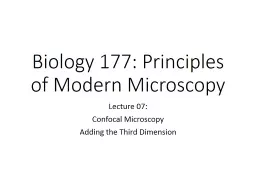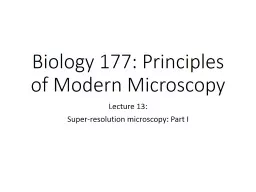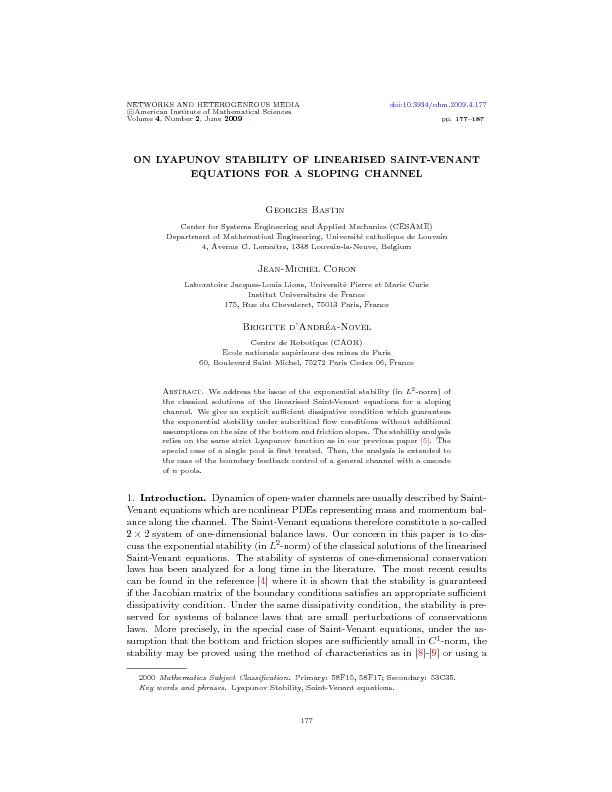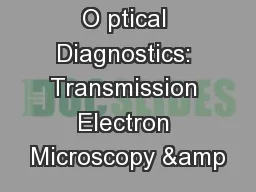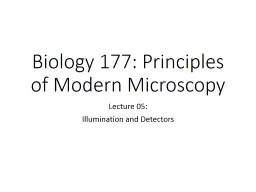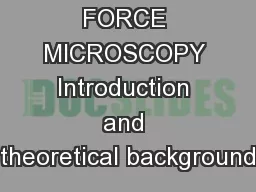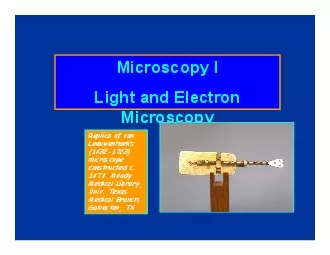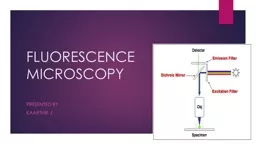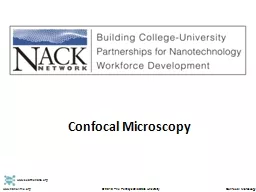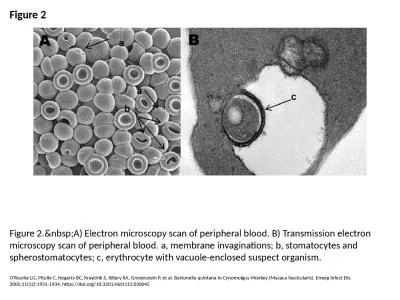PPT-Biology 177: Principles of Modern Microscopy
Author : marina-yarberry | Published Date : 2016-06-25
Lecture 18 High speed microscopy Part 2 High speed microscopy Part 2 Spatial light modulator microscope and other 3D sensors Making laser scanning confocal microscopes
Presentation Embed Code
Download Presentation
Download Presentation The PPT/PDF document "Biology 177: Principles of Modern Micros..." is the property of its rightful owner. Permission is granted to download and print the materials on this website for personal, non-commercial use only, and to display it on your personal computer provided you do not modify the materials and that you retain all copyright notices contained in the materials. By downloading content from our website, you accept the terms of this agreement.
Biology 177: Principles of Modern Microscopy: Transcript
Download Rules Of Document
"Biology 177: Principles of Modern Microscopy"The content belongs to its owner. You may download and print it for personal use, without modification, and keep all copyright notices. By downloading, you agree to these terms.
Related Documents

